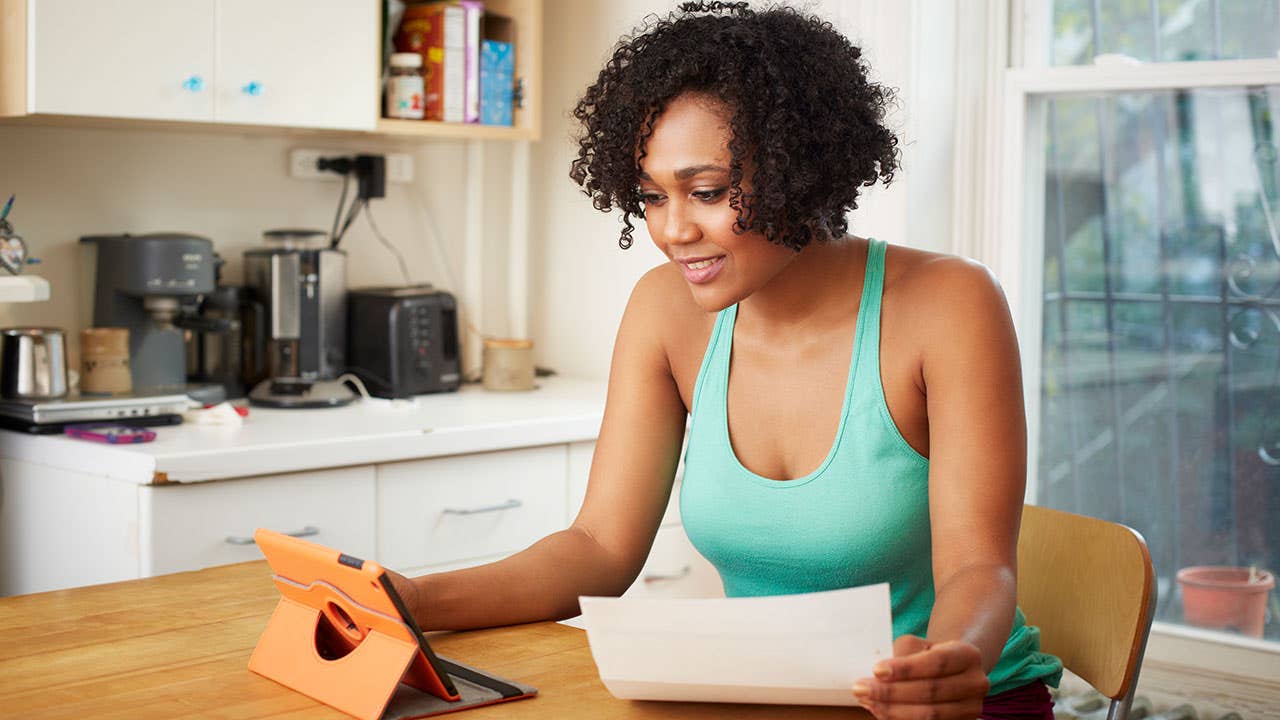Loan origination fees: Everything you need to know

The Bankrate promise
At Bankrate we strive to help you make smarter financial decisions. While we adhere to strict , this post may contain references to products from our partners. Here's an explanation for .
Key takeaways
- Origination fees are a common cost when borrowing a personal loan.
- Expect to pay anywhere from 1% to 10% of the total loan amount, though the exact fee varies.
- Deducting an origination fee from your loan funds is the most common, and simplest, way to handle it.
When you take out a loan, you may have to repay more than just the principal and interest. Some lenders also include an origination fee, an up-front fee to process a new loan application, including underwriting and verifying new borrowers.
These fees can add hundreds of dollars in extra costs to your loan. The exact amount of the fee you’ll pay depends on your credit health and overall financial profile. Do your research, compare loans with and without origination fees, and run the numbers to determine which option is most ideal for your financial situation.
What is an origination fee?
Also called an administration or application fee, an origination fee is a common charge when you borrow a personal loan. It is a percentage of your original loan amount, and lenders charge it to cover the costs of processing your application.
If you can’t avoid a loan origination fee, you can typically repay it in one of two ways: roll the fee into your loan’s balance or take it out of the funds you receive.
Greg McBride, Bankrate’s chief financial analyst, says that having the fee taken out of the loan principal may be the only way some people can afford a personal loan. “For a lot of borrowers, it’s much more convenient to have it come out of the loan proceeds simply because they may be strapped for cash to begin with.”
How are loan origination fees determined?
The amount you will pay in fees is determined by factors such as:
- Your credit score.
- Your assets.
- Your liabilities.
- Your total income.
Not all loans have origination fees, but don’t assume these offers are always the cheaper choice. If you’re considering a personal loan without an origination fee, pay close attention to the loan’s other costs.
Lenders still need to make money, so they may try to make their money back through higher interest rates or prepayment penalties instead. In some instances, a loan with an origination fee could still have a lower overall cost. Always use a personal loan calculator and compare lenders based on annual percentage rate (APR), not interest rate, to determine which has the better offer.
Example of an origination fee
Lenders set origination fees between 1 percent to 10 percent of the loan amount, though some bad credit lenders will charge an origination fee up to 12 percent. So if you borrow a $10,000 personal loan with an origination fee of 5 percent, you will receive $9,500 from your lender.
You can use this knowledge to your advantage when applying. If you know you will need exactly $10,000, for example, you can apply for a slightly larger amount. This way, you won’t have to worry about falling short of your actual funding goal.
Unlike a late fee, you don’t pay the origination fee out of pocket. Instead, it is deducted from your loan before you receive it. If a lender tries to make you pay an origination fee before you receive your loan, it is a sign of a personal loan scam.
Should you consider a loan if it has an origination fee?
For lenders that charge origination fees, that cost is a required loan expense — though you may be able to negotiate a lower rate. However, origination fees are not always a deal-breaker. For instance, origination fees on a loan could mean a lower overall interest rate because lenders with no origination fees may raise their interest rates to make up the difference.
The origination fee is only one small part of determining your overall loan costs. For example:
- Your credit score: Arguably the biggest factor that impacts loan rates is your credit score. Someone with a good credit score (670 and above) is more likely to receive a lower interest rate than someone with bad credit.
- Loan type: With a variable-rate loan, your interest rate could change over time based on market rates. A fixed-rate loan is the opposite, meaning your payment amounts won’t change.
- Your location: Loan rates vary based on where you live, although if you choose to work with a national bank or online lender, this will play less of a role in your cost.
Therefore, you need to determine the overall cost to determine if the origination fee will increase the loan cost.
With that said, the origination fee will often be taken out of your loan proceeds, meaning you may not receive your full loan amount. Still, the benefits of taking out a loan with an origination fee could far outweigh the fee itself.
How do you compare loans with an origination charge?
Comparing loans with an origination fee will help you save money over time and ensure that you’re getting the best deal possible.
1. Get multiple quotes
As with any loan, it’s important to shop around to make sure you’re getting a good rate. Look at the best personal loan rates and find a lender that can provide what you need. Ask your loan provider if it requires an origination fee, and review the full terms and conditions of your loan to avoid hidden costs.
2. Look at the APR
Your loan’s annual percentage rate is based on the interest rate, but it also accounts for other costs, including loan origination fees. When figuring out the total cost of repaying your loan, don’t include the origination fee on top of the APR. If you do, you’re probably estimating a higher cost than what you would pay.
For example, let’s say you compare personal loans from two lenders. Both offer 10 percent interest and a loan term of five years. However, the first loan offer has an origination fee of 3 percent, while the second comes with a fee of 5 percent. The interest rate stays the same for both loans, but the APR for the first loan will be significantly lower than that of the second.
3. Consider the length of your loan
In general, the shorter your loan term is, the lower your interest rate will be. However, shorter loans usually have higher monthly payments. If the origination fee is folded into the payment on top of the interest and principal, you might be more inclined to opt for a loan without an origination fee, or one that takes the fee out of the loan amount, to keep costs down.
How can you save on origination fees?
Origination fees are often attached to loans to help lenders make money while offering incentives to the borrower as lower interest rates and other fees that may be included. One of the best ways to save on origination fees is to get estimates from lenders who don’t include them in their loans. Credit unions often have membership requirements to join, but they also typically don’t charge origination fees.
Another way to save on origination fees is to negotiate the amount owed. You may not be successful, but it can’t hurt to try. If a lender knows you may choose another option if the fee isn’t reduced or waived, it might be enough to get them to reconsider.
The bottom line
Origination fees aren’t a guaranteed cost when you borrow a personal loan, but they are very common. If you don’t have excellent credit, it’s likely that the lenders you qualify for charge at least a small origination fee.
With an average personal loan rate sitting at over 12 percent, it is crucial to compare lenders by total cost. Use the loan’s APR, not simple interest rate, when determining which option is best for you.
Related Articles



